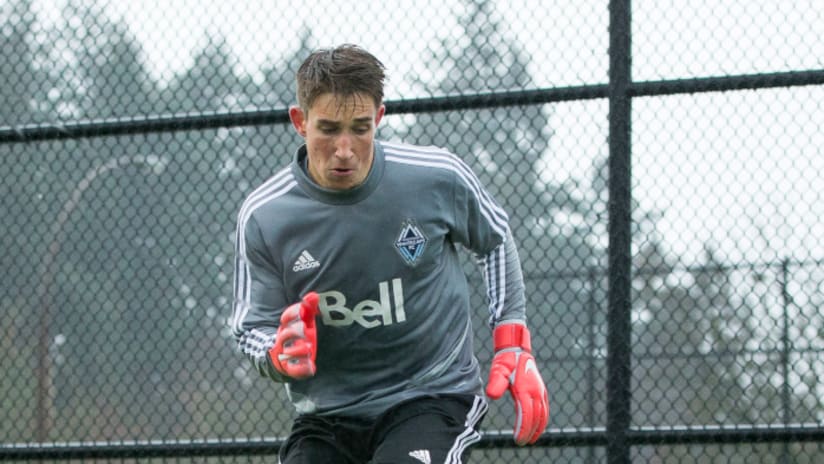VANCOUVER, BC – For many years, young soccer players growing up in Saskatchewan could only dream of making the professional ranks.
There was no pathway. And, for the most part, no hope.
Brett Levis helped change that in 2016 when he signed a Major League Soccer contract with Vancouver Whitecaps FC, becoming the first graduate of the University of Saskatchewan to do so. And now, for the second time in less than three years, the province of Saskatchewan – and more specifically, the city of Saskatoon – has produced another MLSer for the club.
Whitecaps FC announced on Thursday that 19-year-old goalkeeper Thomas Hasal has been added to the MLS roster. Hasal, who moved to Saskatoon at age nine after spending time in Ontario and Alberta, is the first player from a regional Whitecaps FC Academy Centre to sign for the first-team.
“Originally, we were always kind of that third or fourth sport of choice,” said Bryce Chapman, the associate head coach of Whitecaps FC’s Saskatchewan Academy Centre. “We’re very much a big hockey province, a big football province, but when we brought the Vancouver academy into place it gave a realistic, direct, and more visible path for our players.”
Over the last several years, the 'Caps have established more than 20 regional Academy Centres across Canada, with the hopes of growing the game and identifying young talent. And Hasal was one of the first players to join the Whitecaps FC Saskatchewan Academy Centre in 2013.
“When I first joined the Whitecaps Saskatchewan Academy, I always dreamed of playing for the Vancouver Whitecaps, playing in BC Place, and having a chance to represent Vancouver, my family, and my hometown,” said Hasal, who has represented Canada at the U-18, U-20, and U-23 levels. “It made it a realistic option, finally having a tie with a professional club.”
Even back then, Chapman saw a player that was driven to succeed. That, above anything else, is what set him apart from the rest of his peers.
“As a person, he was very much what he is today,” Chapman said. “He’s an honest young man. He was very determined when he came to us. It was him that would look me in the eye and shake my hand. He wanted to eventually be a pro right from day one.”
It certainly took a lot of hard work to get there.
Chapman said he’s seen Hasal grow immensely as a player through the years, while working with goalkeeper coaches JD Blakley and Kent Kowalski in Saskatoon, Nuno Santos with Canada Soccer, and Raegyn Hall with Whitecaps FC. Particularly, Chapman has noticed an improvement in Hasal’s ability to command his box and be more efficient with his movements.
“He always wanted to get better,” Chapman said. “You see a lot of players in our time that talk about getting better. Thomas was very much a person that put the work in. He wanted to really roll up his sleeves and make the best of every opportunity that was given to him.”
That included the opportunity to make the move to Vancouver’s U-19 Academy team in 2016. Coincidentally, it was around the same time that Levis had broken into the first-team and earned an MLS contract, which made waves back in Saskatchewan.
In fact, Hasal reached out to Levis on multiple occasions to talk about Vancouver and best prepare himself for the opportunity ahead.
“Having Brett as a role model was amazing,” said Hasal, who led Vancouver’s U-19s to the Development Academy semifinals last year. “It showed me that I could do it and that it was a possibility. Now that I’ve done it, I hope I can show a lot of kids growing up playing the game in Saskatchewan that they can make it as well if they work hard.”
Chapman said the Levis effect is a very real thing in Saskatchewan. His emergence, combined with the creation of the Whitecaps FC Academy Centre, has opened a lot of doors for young soccer players in the province.
And he’s certain the signing of Hasal will only help the cause moving forward.
“Once we started putting players into positions that got them into the Academy in Vancouver, then eventually when we started to put players into the first-team environment, it gave young people a realistic, visual path,” Chapman said. “For young people in the game of soccer, you need that. In Saskatchewan, we don’t have enough of that. You don’t get to see the first-team play every second weekend. Now, we have those personal connections.”


